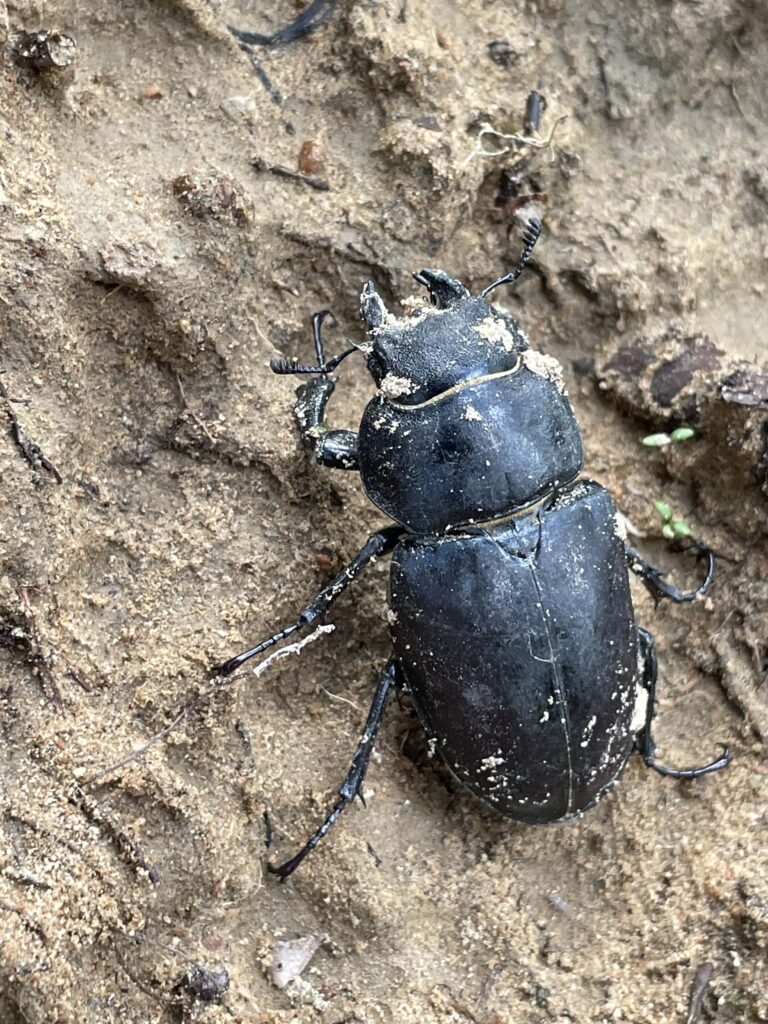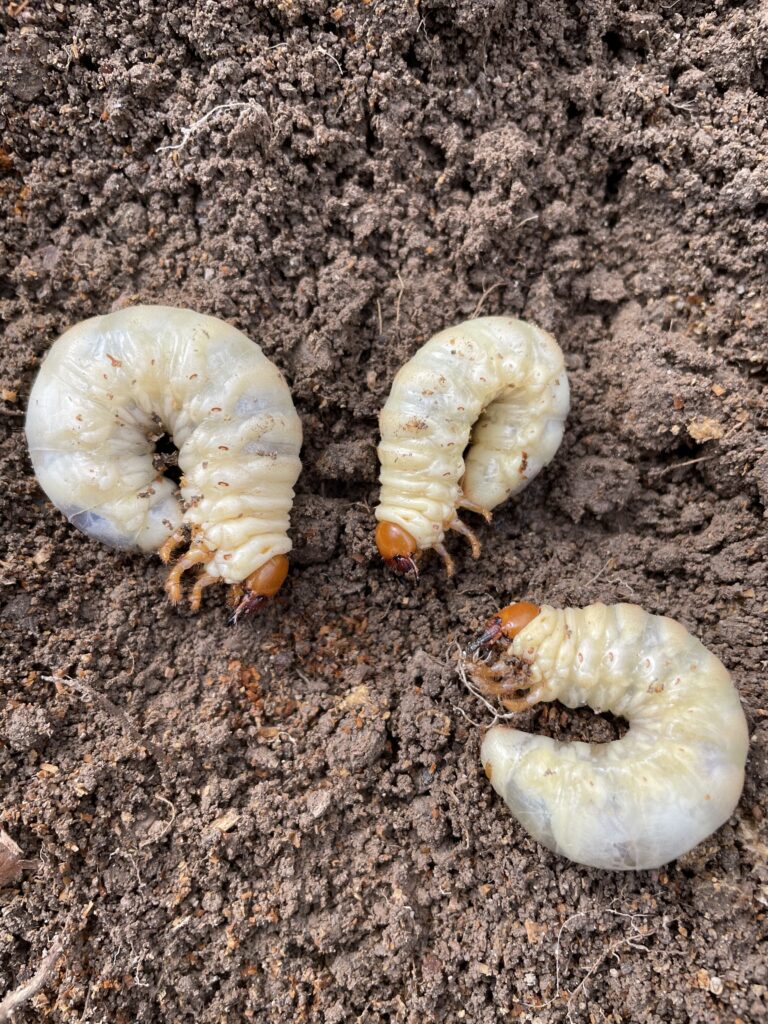
Results were positive in the first ever evaluation of log piles constructed for stag beetles. Results show that a considerable number of saproxylic beetles utilize log piles, including stag beetles. The skewed sex distribution that was dominated by female stag beetles indicated that log piles were visited and utilized as a habitat where females could lay their eggs. This assumption was strengthened as multiple specimens of stag beetle larvae were observed at log piles during the survey.
A greater proportion of the identified beetle species were obligate saproxylic rather than facultative, and 315 individuals of 18 threatened species utilized log piles as a suitable habitat. The five most common species of the threatened species were Xyleborus monographus, Rhagium sycophanta, Cryptolestes duplicatus, Uloma culinaris and Prionychus melanarius. Both U. culinaris and P. melanarius belong to the family Tenebrionidae and both these species have their larval development in dead wood of oak. Both species are primarily found in paths created by other species inside of the wood, P. melanarius typically being found in paths created by Osmoderma eremita and U. culinaris typically living in the paths created by Dorcus parallelipipedus. We can assume, due to the presence of P. melanarius, that some of the log piles were already affected by brown rot, while the presence of Amphicyllis globiformis indicated that some were possibly affected by white rot. An assumption that is further strengthened by the presence of C. duplicatus, which is another species that has its larval development in bark that has been affected by fungus. Multiple species from families with a preference for dead wood that has been affected by fungi such as polypore, as well as by species in the class Myxomycota, were found in this study, and consisted mainly of families such as Leiodidae, Latridiidae and Cryptophagidae. The presence of species such as Agathidium nigrinum, A. globiformis and C. duplicatus show that log piles constructed for stag beetles also act as a suitable substrate for a high biodiversity of fungi.

Conclusions
Nature conservation projects, with the aim of preserving a high biodiversity, such as boxes mimicking tree hollows have been successful with a considerable number of saproxylic beetles utilizing them. The fact that 220 species were detected in this study, we can see that log piles are an equally important addition in nature conservation practices and should be implemented in projects that aim to increase the number of suitable habitats for saproxylic beetles. Log piles constructed for stag beetles should, for best result, be built on sand, and primarily created in areas where they will act as bridges between areas of high conservation value to ease the dispersal of saproxylic beetles. Log piles will also improve the habitat in which they reside in, and act as bridges in a fragmented landscape. It remains, however, somewhat unclear which landscape and site factors that are of highest importance for species richness and abundance in log piles constructed for stag beetles.